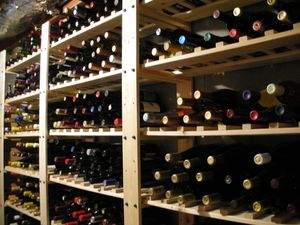By Evan Dawson, Managing Editor
 The other day I read a truly outstanding piece of wine writing by one of the most underrated writers in the field today. He's underrated probably because he's not actually in the wine writing field; Keith Levenberg is an enthusiast who makes his living elsewhere, but every six weeks or so, he rewards readers with his insights. His blog is not unlike your favorite greasy spoon tucked into high-end restaurant row: You always see the same dozen people there, and they realize that the place is going to be packed if anyone ever finds out how good the fare is.
The other day I read a truly outstanding piece of wine writing by one of the most underrated writers in the field today. He's underrated probably because he's not actually in the wine writing field; Keith Levenberg is an enthusiast who makes his living elsewhere, but every six weeks or so, he rewards readers with his insights. His blog is not unlike your favorite greasy spoon tucked into high-end restaurant row: You always see the same dozen people there, and they realize that the place is going to be packed if anyone ever finds out how good the fare is.
It was Keith's piece on how wines mature that had me thinking of New York wines. Specifically, I'm thinking about Finger Lakes rieslings and Long Island reds, which, categorically speaking, are the state's wines that have the best potential for long-term improvement in the bottle.
It's time that we admit what we don't know. And it's time we recognize how thrilling that is.
In older wine regions, we get a good look at what might happen a decade or three down the line. Sure, vinification techniques change. But there is a reason to believe that we know what the special bottlings of, say, Cote-Rotie might do with time.
But as Keith makes clear, there's way too much posturing and affectation when critics try to slap a "drink window" on structured wines:
In its simplest form, the thought process goes something like this: Tannins help a wine age, and this wine is tannic; therefore it needs time. There are endless variations on the theme: As wines age they lose their baby fat, and this wine has a lot of baby fat; therefore it will be a long time before it fades. Or: Wines integrate with age, and this wine seems very disjointed; therefore it just needs some time to come together. Or: Wine ages on its balance, and this wine is perfectly balanced; therefore it will age effortlessly. You can pluck any one you want to justify any arbitrary prognostication. For example, one person tastes a heavily tannic, backwards wine and concludes it’s structured for long aging. Another person tastes the same wine, decries its lack of balance, and quotes the late Henri Jayer: “If it tastes too tannic, then it is too tannic.” Which one is right? Answer: It depends. Some wines have a track record for starting out punishingly tannic and eventually becoming exquisitely finessed, while other wines that might seem structurally indistinguishable from the starting gate never manage to shed the harshness–or, just as disappointingly, they do shed the tannin but don’t reveal anything interesting in the material that remains.
He's right, of course, and if I spent five minutes I could probably find an instance or two in which I over-pronounce or, perhaps, speculate carelessly. It's tempting to do, but most of the time we're really just bullshitting. And it's a great way to get into trouble; few things provoke the kind of public opprobrium that comes when a critic urges his readers to lay down an expensive bottle that quickly goes downhill.
But we should feel no frustration with the lack of precision with which we can anticipate New York wines' aging curves. Instead, we should enjoy this opportunity to witness an evolution, of wine regions from nascency to actualization. How good will the best Long Island merlot be in twenty-five years? I can guess, and Lenn can guess with better authority than most. But the ledger is so thin that we're still simply guessing, and to Keith's point, we'll always be simply guessing.
Do not take this to say that we don't have any clue at all what New York wines will do with some amount of bottle age. We've seen enough example of, for example, Bedell's or Paumanok's merlots to understand their potential over a decade or so. Same with the rieslings — and particularly the late harvest rieslings — of Hermann J. Wiemer. There are other examples. But we need not obsess over nailing down the projected pinnacle of each of New York's finest wines. We can track the progress as it happens, sometimes rewarded, sometimes disappointed. Just remind yourself that a wine that is, to use a common phrase, "past peak" is simply communicating different things. It is very often a highly enjoyable story if you're willing to listen to it.
There will be some changes coming to NYCR in 2012. Among other projects, Lenn and I are planning to create a rough vintage guide. Not a typical vintage chart, but a helpful report on recent vintages. But no matter what the vintage evaluation, there will be surprises, and if we ever tell you we know exactly when a wine will peak, well…
